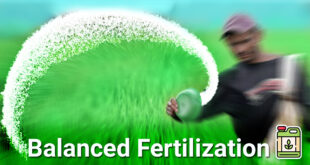- For the first time, scientists have reported evidence of the piezoelectric effect in liquids.
- The effect has been known for 143 years and in this time has been observed only in solids.
- The effect was found in ionic liquids (liquids which are made of ions instead of molecules) at room temperature.
What is Piezoelectricity?
- Piezoelectricity is the electric charge that accumulates in certain solid materials such as crystals, ceramics, and biological matter such as bone, DNA, and various proteins in response to applied mechanical stress.
- The word piezoelectricity means electricity resulting from pressure and latent heat.
What is the piezoelectric effect?
In the piezoelectric effect, a body develops an electric current when it is squeezed.
- Quartz is the most famous piezoelectric crystal.
- It is used in analog wristwatches and clocks.
- Such crystals are also used in other instruments where converting mechanical stress to a current is useful.
- Quartz is silicon dioxide (SiO2).
- The quartz crystal consists of silicon and oxygen atoms at the four vertices of a three-sided pyramid.
- Each oxygen atom is shared by two pyramids.
- These pyramids repeat themselves to form the crystal.
- The effective charge of each pyramid is located slightly away from the centre.
- When a mechanical stress is applied, that is when the crystal is squeezed, the position of the charge is pushed further from the centre, giving rise to a small voltage.
Hooke’s law:
- Physicists explain the effect using a combination of Hooke’s law — that the force required to squeeze an object is linearly (i.e. non-exponentially) proportional to the amount of squeezing — and the properties of dielectric materials.
- These are materials that don’t conduct electricity but whose electrons are still mildly affected by an electric field.
- Hooke’s law is not clear when the body isn’t very compressible.
Possible new applications
- The discovery opens the door to applications which are more readily recyclable and in many instances pose fewer environmental issues than many currently used piezoelectric materials.
- The liquids also displayed the inverse piezoelectric effect – they became distorted when an electric charge was applied.
- Having a theory to explain the liquids’ behaviour could reveal why these liquids behave the way they do, which in turn could reveal better ways to develop newer applications.
Advantages
No external power source required:
- Due to their ability to produce a voltage when acted upon by a force, piezo materials require no external power source.
- Easy installation:
- With small dimensions, they’re a great fit and easily installed in high-density electronic devices.
Responsiveness to high-frequencies:
Compared to other devices, piezo materials have a substantially higher frequency response which makes them wonderfully responsive in even the most demanding situations.
Highly flexible materials:
Most piezo materials can be constructed in a wide variety of shapes and sizes, so they’re highly useful across various applications and fields.
Limitations:
Small amount of electric charge:
- Though they’re self-generating, piezo materials produce fairly small electric charges, which means a high impedance cable is required to connect them to an electrical interface.
- Environmental conditions affect performance:
- Piezo materials are affected by temperature and changes in humidity.
- While in the static condition, they can’t measure output.
Output is relatively low:
- While some piezo materials produce more output than others, they’re all relatively low.
- For their use to be optimized, an external circuit will often be required.
SOURCE: THE HINDU, THE ECONOMIC TIMES, PIB
 Chinmaya IAS Academy – Current Affairs Chinmaya IAS Academy – Current Affairs
Chinmaya IAS Academy – Current Affairs Chinmaya IAS Academy – Current Affairs



